Development Division
YANMAR ENERGY SYSTEM CO., LTD.
YANMAR Technical Review
Development of Yanmar Energy Management System (Y-EMS)
Abstract
Yanmar Energy System Co., Ltd. sells CHPs, GHPs and other energy equipment. The performance of these products continues to improve, achieving success in the market due to the energy savings and CO2 emission reductions they provide. Unfortunately, the specific circumstances of individual customers, such as the electricity and heat demand of their building, the weather, or energy costs, means that this equipment does not always operate as efficiently as it could.
In response, Yanmar has developed an energy management system to operate this equipment in ways that take account of electricity and gas energy prices, weather forecasts, and load predictions. The system provides comprehensive control of CHPs, GHPs, photovoltaics, and other equipment.
1. Introduction
Yanmar Energy System Co., Ltd. has progressively improved the performance of the energy systems, specifically gas engine combined heat and power systems (hereinafter CHPs) and gas heat pumps (GHPs), with these systems being adopted for the energy savings and CO2 emission reductions they provide. Given that customers use these systems in a variety of different ways, however, these savings are not yet as high as they could be.
In response, Yanmar has developed the Yanmar Energy Management System (Y-EMS) for the optimal and integrated control of a variety of different energy systems, including these CHPs and GHPs, boilers and air conditioning systems, and photovoltaic and other forms of renewable energy. This article describes the system.
2. Development Background
High-performance energy systems are increasingly being installed at factories, offices, and other buildings as a way of improving their energy efficiency. Unfortunately, these various systems tend to be operated independently of each other, with results that are less than optimal in terms of the building as a whole.
Furthermore, while the liberalization of electricity retailing and city gas supply in Japan gives consumers a choice of energy supplier, the complexity of pricing structures makes it difficult to select the best option. It was a desire to resolve the underlying difficulties that this environment causes for users that prompted Yanmar to embark on this development.
3. Underlying Difficulties for Users
The current environment poses the following three underlying problems for users.
(1) Large energy losses
Although high-performance energy systems may have been installed, unnecessary energy production still occurs because of a failure to operate them in ways that take account of such factors as the weather-dependence of renewable energy generation and changes in the user's heat and electricity demand.
(2) High energy costs
Overpayment for energy due to an inability to operate energy systems in ways that take account of continually varying energy prices.
(3) Heavy maintenance workload
Because systems are operated independently, considerable effort is required for information collection and maintenance.
4. Product Features
Y-EMS is a comprehensive energy system for overcoming the difficulties described above and is based around an energy management controller (see Fig. 1).

Y-EMS was designed to be "smart", "low-cost", and "easy to use". It has the following three features.
① Optimal control of heat and electricity
② Visualization of energy use
③ Maintenance and management functions
(1) Optimal control of heat and electricity
By obtaining information about things like the weather, energy prices, and the level of load at different times in advance, the controller manages the generation, storage, and use of energy in the way that best suits the customer's requirements (see Fig. 2).

Y-EMS has three optimal control modes:
(a) Energy cost reduction mode
This controls operation so as to minimize the cost of energy based on the prices for electricity and gas and the maintenance costs for the different types of equipment.
(b) CO2 reduction mode
This controls operation so as to minimize CO2 emissions from power plants and from CHPs and other energy equipment.
(c) Primary energy reduction mode
This controls operation so as to minimize the amount of primary energy required to generate heat and electricity.
Y-EMS has also functions such as demand reduction operations when the electricity consumption comes close to the critical limit or reverse flow preventing operations for grid power protection.
The following describes an example of how the system operates.
① Operating conditions
(a) Operation mode
→Energy cost reduction mode
(b) Type of customer
→Hotel
(c) Energy equipment
→CHP, photovoltaic power generation, boiler
(d) Electricity and gas prices (see Fig. 3)
→Electricity: Price of daytime electricity is high
Gas: Price during periods of high gas demand is high

(e) Electricity and heat demand (see Fig. 4)
→Electricity: High demand during daytime
Heat: High demand during night

② Operation
(a) Before introduction of Y-EMS (see Fig. 5)
CHPs operates during the daytime, in which electricity demand is high, to reduce the contract electricity. Unfortunately, not all the heat produced by the CHPs cannot be utilized and so it is released into the atmosphere.

(b) After introduction of Y-EMS (see Fig. 6)
Based on the prices of electricity and gas and information of customer demand, the CHP is operated in the early morning when the gas price is low, with the heat required for use at night being stored. This heat is used during those times at night when the gas price is high, during which time the CHP and boiler are turned off. This operates the system in a way that is optimized to the customer's requirements based in their heat and electricity usage.

(2) Visualization of energy use
Y-EMS collects data from the energy equipment and presents it in such a way that building-wide energy use can be taken in at a glance. Yanmar uses this information to achieve optimal operation based on the customer's requirements, including by making improvements to how energy equipment is operated or suggesting how the equipment can be upgraded.
(3) Maintenance and management functions
As current practice is to manage equipment independently, a lot of effort is spent on dealing with items of equipment one at a time. It is also difficult to determine how energy is being managed at a building-wide level. In contrast, by providing centralized data management, Y-EMS can reduce the maintenance and management workload by making it is easy to plan equipment maintenance and provide reports that are required monthly.
Fig. 7 summarizes the benefits of introduction of Y-EMS that have been described above.

These features reduce costs for customers in three different ways (see Fig. 8):
(a) Optimal control achieved by introducing Y-EMS for existing equipment
(b) Use of visualization for equipment improvement proposals and upgrades
(c) Reduction in maintenance and management workload

5. Example Introduction
This section describes the results achieved when the system was introduced at a currently operating facility. The cost saving achieved was 24%. (See Fig. 9)
Optimal control: 9% improvement Optimal control of CHP and air conditioning, adjustments to boiler temperature settings
Equipment upgrades: 10% improvement Reduction of contract electricity as a result of operating more CHPs, changes to air conditioning practices
Maintenance and management workload: 5% improvement Reduction in data collection and reporting workload

6. Conclusions
Yanmar has developed an energy management system that can optimize heat and electricity based on the customer's requirements. Yanmar intends to continue striving to become a trusted partner to its customers by further developing the controller to provide customers with new forms of added-value based on the energy supply situation and other energy-related factors.
-IMPORTANT-
The original technical report is written in Japanese.
This document was translated by Research & Development Management Division.
Author


 Agriculture
Agriculture
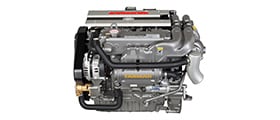 Recreational Marine
Recreational Marine
 Recreational Boat
Recreational Boat
 Premium Cruiser
Premium Cruiser
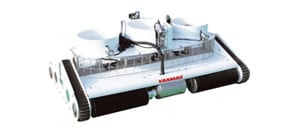 Marine Equipment
Marine Equipment
 Marine Commercial
Marine Commercial
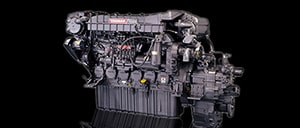 Propulsion Engines (High Speed)
Propulsion Engines (High Speed)
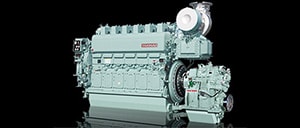 Propulsion Engines (Medium Speed)
Propulsion Engines (Medium Speed)
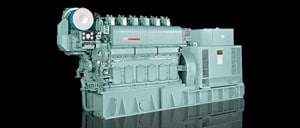 Auxiliary Engines
Auxiliary Engines
 SCR System
SCR System
 Dual Fuel Engine
Dual Fuel Engine
 Two-stage Turbocharging System
Two-stage Turbocharging System
 Electric Propulsion System
Electric Propulsion System
 Energy Systems
Energy Systems
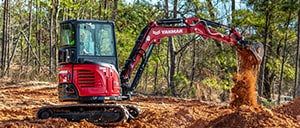 Compact Equipment
Compact Equipment
 Industrial Engine
Industrial Engine
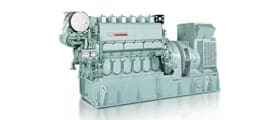 Power Generation
Power Generation
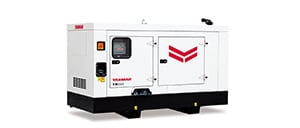 Compact Power Products
Compact Power Products